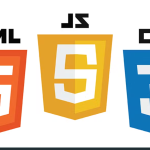
Responsive Typography in the Age of Variable Fonts: A CSS Basics Tutorial
- Post
- August 5, 2023
- CSS Basics, HTML & CSS, Web Development
- 0 Comments
Welcome to our comprehensive tutorial on responsive typography in the age of variable fonts. In this guide, we will explore the fascinating world of variable fonts and how they revolutionize the way we approach typography in web design. With the power of CSS basics, we can create flexible and adaptive typography that enhances user experience across various devices and screen sizes. Let’s delve into the details and learn how to harness the full potential of variable fonts in your web projects.
Understanding Variable Fonts and Their Advantages
Variable fonts are a groundbreaking innovation in typography that allow a single font file to contain multiple variations of weight, width, slant, and other attributes. This versatility enables web designers to create responsive typography that adjusts seamlessly to different devices and screen resolutions. By leveraging CSS basics and variable fonts, we can achieve the following advantages:
Improved Performance:
With variable fonts, you can use a single font file instead of multiple files for different styles, reducing page load times and improving website performance.
Better Flexibility:
Variable fonts provide a wide range of design possibilities, allowing you to fine-tune the typography precisely to match your design vision.
Efficient Space Utilization:
By using a single font file for various styles, you can optimize space and save bandwidth, particularly for mobile users.
Implementing Variable Fonts with CSS Basics
To harness the power of variable fonts, you need to utilize CSS basics effectively. Let’s explore the steps to implement variable fonts in your web projects:
Font Loading Strategies
Properly loading variable fonts is crucial for ensuring a smooth user experience. Use the font-display property in CSS to control how the fonts are displayed during loading. For example, use font-display: swap to ensure text remains visible while the font loads.
Defining Font Variations
In your CSS, define the font variations you want to use. For example, to set the weight of a variable font, use the font-weight property and specify a range or numeric value for different styles.
Fallback Fonts
To ensure compatibility with older browsers, provide fallback font options using the font-family property. This ensures that users see a similar font even if variable fonts are not supported.
Responsive Typography with Media Queries
Responsive typography is at the core of variable fonts’ effectiveness. Utilize media queries to adjust font sizes and styles based on screen sizes and device orientations. This ensures readability and optimal user experience across various devices.
Common Pitfalls and How to Avoid Them
Overusing Font Variations
While variable fonts offer numerous options, avoid overusing font variations in a single project. Stick to a few well-chosen styles to maintain visual consistency and a clean design.
Neglecting Accessibility
Always consider accessibility when implementing variable fonts. Ensure adequate contrast between text and background colors, and avoid font sizes that are too small or too large.
Commonly Asked Questions
Q1: Do all browsers support variable fonts?
A: Most modern browsers support variable fonts, but it’s essential to provide fallback fonts for older browser versions.
Q2: How do variable fonts affect website performance?
A: By using a single font file, variable fonts can improve performance by reducing the number of HTTP requests and file sizes.
Q3: Can I use variable fonts with CSS frameworks like Bootstrap?
A: Yes, variable fonts can be used with CSS frameworks like Bootstrap, making it easy to integrate them into existing projects.
Q4: Are variable fonts SEO-friendly?
A: Yes, variable fonts do not have a negative impact on SEO. As long as you use proper font-loading strategies, search engines will index your content effectively.
Q5: Can I self-host variable fonts on my server?
- A: Yes, you can self-host variable fonts like any other web font. Make sure to include the appropriate
@font-facerules in your CSS.
Final Words
Responsive typography powered by variable fonts and CSS basics is a game-changer in web design. Embrace this innovative approach to create visually appealing and adaptable typography that enhances user experience across devices. By following best practices and avoiding common pitfalls, you can create a remarkable typographic experience for your audience.




